Enterprise Architecture
AT THE SERVICE OF A STRATEGIC AND INTEGRATED DIGITAL TRANSFORMATION
Architecture at the service of digital transformations
Enterprise architecture considers digital transformation primarily as a comprehensive business transformation. The goal is to align technologies, strategic business objectives, activities, working methods, and business needs within an integrated vision that ensures a seamless and effective transformation.
| The absence of an enterprise architecture approach, within the framework of a digital transformation, can lead to the following classic pitfalls:
The pitfalls
➤ Loss of focus:
Launching costly technology projects without a thorough assessment of actual needs, risking disconnecting the transformation from the company’s strategic objectives.
➤ Technology-centric approach:
Focusing solely on implementing new technologies without aligning them with business objectives.
➤ Lack of employee buy-in:
Failure to secure employee engagement, which can lead to resistance and a lack of understanding of the benefits.
➤ Lack of an integrated vision:
Failure to consider a collaborative approach between business and information system stakeholders, leading to unbalanced transformations (either too business-oriented or too IT-oriented).
The consequences
➤ Unnecessary and costly investments:
Significant expenditures on new technologies that do not add value to business processes, resulting in wasted resources.
➤ Transformation project failures:
Ineffective digital transformations that do not meet the expectations or needs of the business, thus compromising the overall success of initiatives.
➤ Resistance to change:
Low employee buy-in can lead to resistance to change, slowing down or compromising the implementation of new solutions.
➤ Unbalanced projects:
Transformations that are too focused on the business or the information system, without adequate integration of the two, can result in unsuitable or unviable solutions.
| The CESAMES approach: integrated and collaborative
This involves studying the company (or any “piece of a company”) as a system in its own right to be transformed, focusing on mastering its complexity in a global manner. Seen as a whole, the company is part of an evolving environment that must be clearly characterized, in order to ensure that any transformation will find a new balance that meets the needs and constraints of all stakeholders and members of the company. Continuously integrate business and information system visions, in an intrinsically collaborative approach, and thus avoid “silo” approaches driven by IT departments or business lines. The link with product architecture is also essential in enterprise architecture.
Our difference:
➤ Dual expertise in system and enterprise architecture, acquired in numerous sectors.
➤ Use of a clear, pragmatic, and proven enterprise architecture framework (CESAM) to manage complexity.
➤ Approach integrating different perspectives: external view, business view, and information system view.
➤ Architecture framework aligned with that of system architecture.
➤ Compatibility with the TOGAF framework, as an immediately applicable operational component.
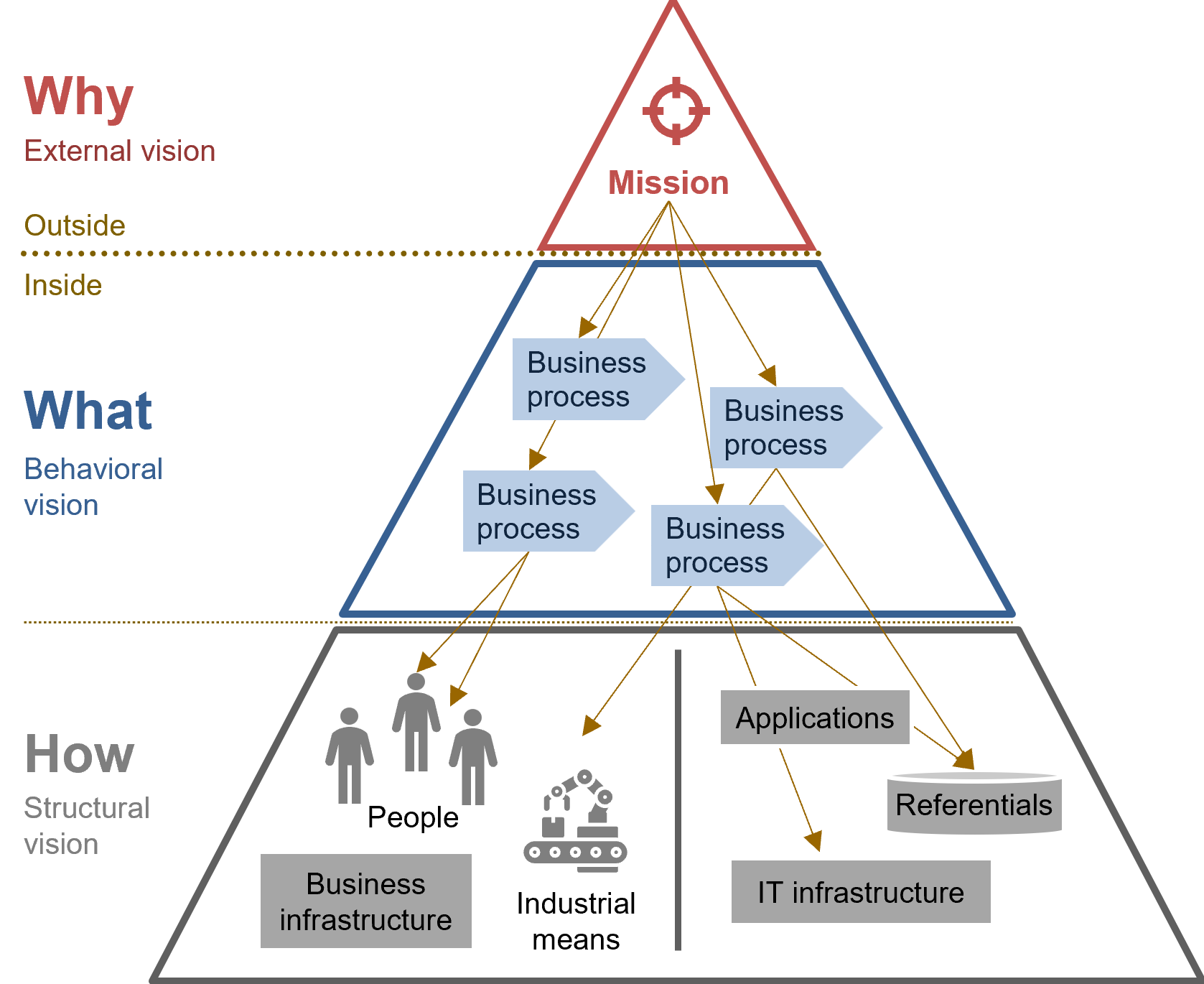
| Enterprise Architecture: Source of Value in Transformation
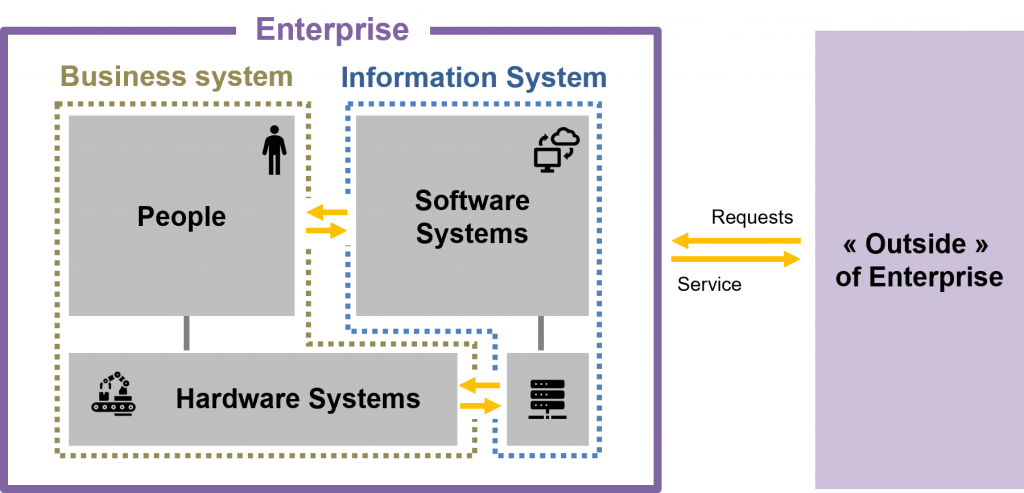
The company is a system
Enterprise architecture first consists of describing the enterprise as a system, with a business dimension (environment, processes, roles), a technical dimension (information system, functionalities, applications), as well as the dependencies between these two dimensions, in order to carry out complete and structured analyses, and to inform transformation decisions.
➤ Look beyond the tools
While technical mastery and knowledge of the tools that drive digital transformation are important, enterprise architecture ensures that businesses, and therefore the company, fully benefit from these tools by transforming themselves.
➤ Control transformation investment
Enterprise architecture helps achieve the optimal ratio between transformation costs and value delivered by the company.
➤ Optimize transformation projects
A natural tool for identifying inconsistencies, misalignments, and opportunities for sharing, enterprise architecture helps streamline projects and manage them in a structured and efficient manner.
➤ Stimulate business and IT collaboration
Enterprise architecture creates mutual understanding and boosts collaboration between business and IT stakeholders through a structured framework that aligns business objectives with technological solutions.
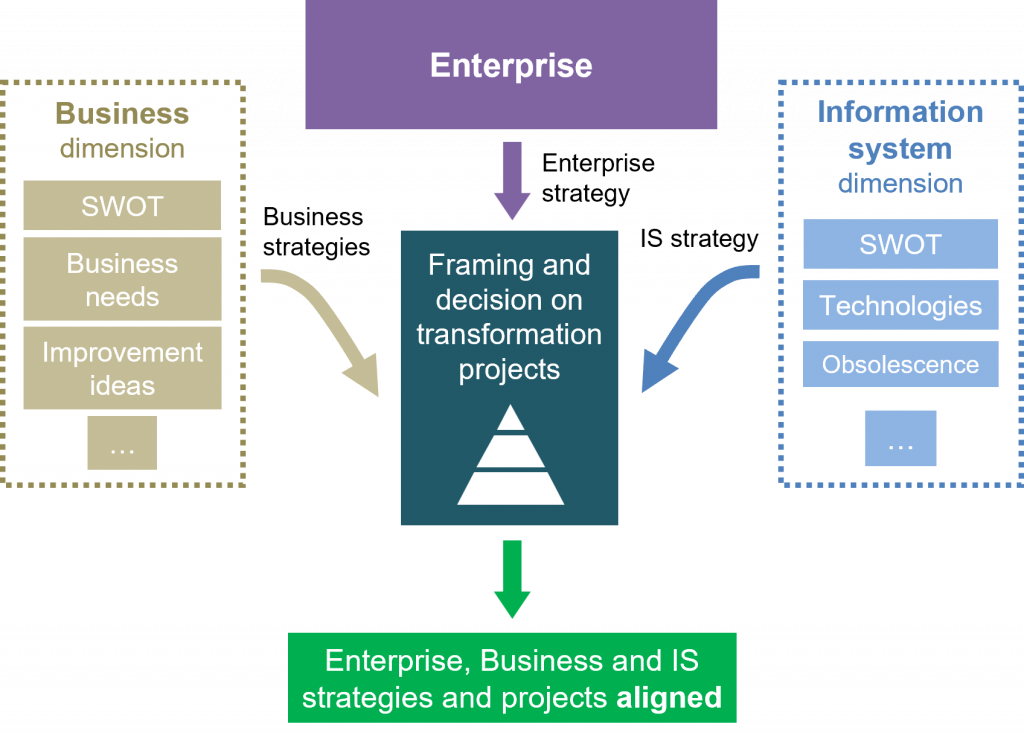
||||| Ressources

Webinaire [FR]
L’usage de l’IA pour la modélisation d’entreprise
Les avancées de l’intelligence artificielle dans les méthodes d’apprentissage ne sont plus à démontrer. Les dernières découvertes en biologie moléculaire de l’outil Alpahfold développé par DeepMind de Google en font foi. En sera-t-il de même pour la modélisation des entreprises : quel est le potentiel de l’intelligence artificielle « hybride » au service de l’architecture ?
Antoine Lonjon, Chief Innovation Officer chez MEGA International, apporte ici des débuts de réponses à l’aide de quelques cas d’emploi pratiques.
Antoine Mouttapa, Architecte expert chez CESAMES, partage des exemples de modèles d’architecture d’entreprise s’appuyant sur l’apprentissage en IA
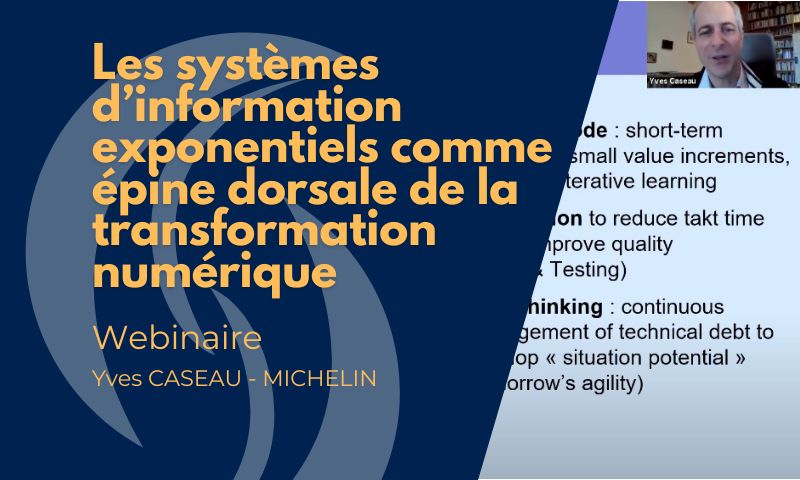
Webinaire [FR]
Les systèmes d’information exponentiels comme épine dorsale de la transformation numérique
Le principe d’organisation exponentielle a été proposé, il y a 6 ans, par Salim Ismail pour caractériser le besoin des entreprises de changer leur façon de travailler, pour s’adapter et tirer profit du flux – en accélération permanente – d’innovations technologiques. Les mêmes principes d’organisation, conçus pour faciliter l’ouverture et le changement permanent, s’appliquent au système d’information et sont essentiels pour que les entreprises réussissent leur transformation digitale.
Yves Caseau abordera ces principes, autour de l’architecture, de l’utilisation des données, des méthodes de développement, et les règles de gouvernance qui facilitent leur mise en œuvre. Le système d’information exponentiel n’est pas conçu, il émerge d’une transformation de l’entreprise qui se concentre à la fois sur la satisfaction de ses clients et sur l’amélioration continue de ses actifs logiciels. Cette transformation des façons de travailler puise dans les racines des méthodes agiles pour favoriser l’adaptation continue et de l’approche lean pour construire une culture de “system engineering and software craftmanship”.
Webinaire animé par Yves Caseau, Group Chief Information Officer chez Michelin
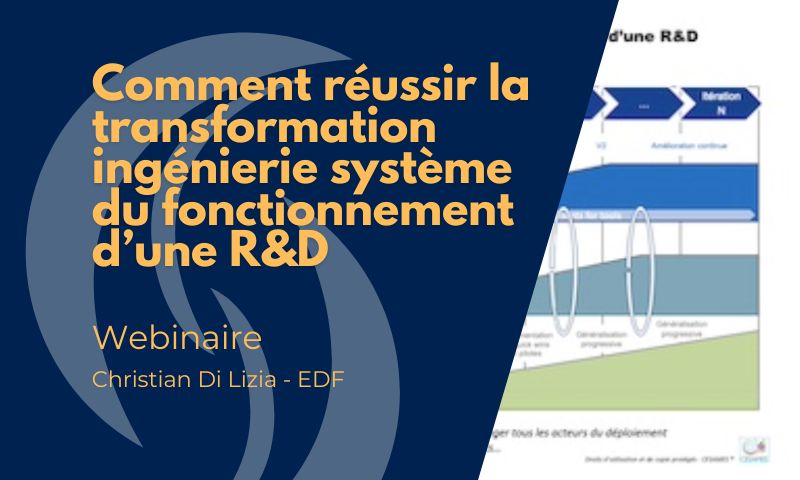
WebinaIRE [FR]
Comment réussir la transformation ingénierie système du fonctionnement d’une R&D
Les produits et services conçus sont de plus en plus complexes à appréhender et à maîtriser.
Dans des marchés qui sont de plus en plus évolutifs, les besoins et contraintes à couvrir, qu’ils soient souhaités ou imposés par des obligations réglementaires toujours plus restrictives, sont de plus en plus changeants et tardent à se stabiliser dans le cycle de développement.
Les risques de modifications tardives dues à la découverte d’infaisabilités, d’incohérences, de non-conformités… sont en constante augmentation.
La contrainte sur les coûts et les délais pousse à développer la normalisation et la réutilisation pour être adaptatif aux besoins des clients sans tout réinventer à chaque fois.
Toutes ces raisons poussent la R&D des grands groupes industriels à vouloir se transformer et à considérer l’ingénierie du système comme un axe majeur de progrès pour réduire les coûts et délais des projets et augmenter l’adéquation et la valeur des produits.
Big bang ou évolution progressive basée sur les retours d’expérience ? Transformation par l’organisation ou par les pratiques ? Emergence par les projets ou restructuration via le management ? Engagement du management et conduite du changement ? Changement des compétences en amont ou en aval de cette transformation ?
La bonne manière de réussir cette transformation est au centre des réflexions des directeurs R&D.
CESAMES dispose d’une grande expérience de ces transformations dans des grandes entreprises industrielles françaises. Lors de ce webinaire, Yann Decré, Directeur Général de CESAMES, aborde les sujets suivants :
— Les gains attendus par ce type de transformation,
— Les principes clés d’une transformation itérative et collaborative orientée par une « architecture cible »,
— La valeur du déploiement via des mises en œuvre pilotes,
–L’accompagnement de la montée en compétence.
Cette présentation est accompagnée du témoignage de Christian Di Lizia, chef de projet « approche processus », transformation des processus de l’ingénierie et des projets du Nouveau Nucléaire, chez EDF.
